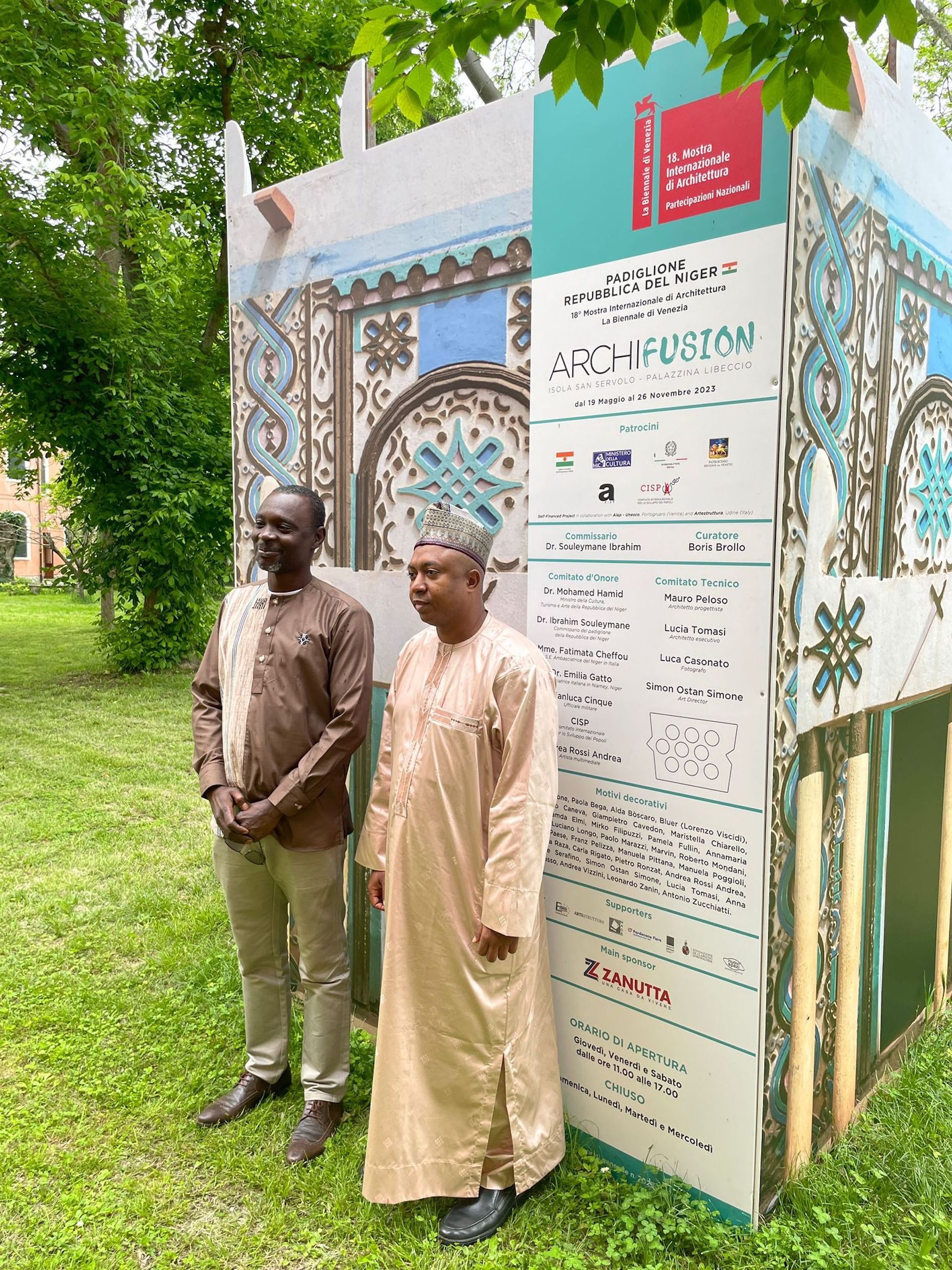Two driving forces behind Niger’s debut exhibition at the Venice Biennale are said to be safe after a military junta toppled the country’s democratically elected government and placed its president under house arrest. However, it remains “highly uncertain” whether the figures will represent the West African country at the Biennale next year, according to an Italian military officer.
Souleymane Ibrahim, who heads Niger’s Agency for the Promotion of Cultural Enterprises and Industries, is commissioner of Niger’s ongoing Archifusion exhibition, which opened at the Venice Architecture Biennale in May and runs to November. He visited Venice in the spring to unveil the exhibition with Mohamed Hamid, Niger’s minister of culture, tourism and crafts at the time. Both figures are allies of Mohamed Bazoum, Niger’s democratically-elected President who was deposed in a coup on 26 July.
Boris Brollo, who curated the architecture exhibition, wrote on Facebook on Saturday that he was worried about Souleymane’s safety. “For days we have had no news from […] Souleymane Ibrahim,” he wrote.
Speaking with The Art Newspaper, Brollo says that Souleymane, who had called him shortly after the coup to say he was safe, had stopped responding to his emails.
However, Brollo received confirmation on 9 August from Gianluca Cinque, a senior officer in the North Atlantic Treaty Organization (Nato) and Italy’s joint multinational civil-military cooperation unit, that both Souleymane and Hamid were safe. The officer had been posted in Niger until last year.
“I contacted Souleymane and he told me that he is healthy and well, and that his family is okay,” Clinque tells The Art Newspaper. He adds that Souleymane is currently living in Niger and Hamid is based in Paris.
Niger’s prime minister, Ouhoumoudou Mahamadou, has also relocated to Paris, according to reports, after becoming stranded in Europe while visiting Rome for a conference on migration when the coup was launched.

Souleymane Ibrahim (left), commissioner of Niger’s presentation at the 2023 Venice Biennale of architecture, and Mohamed Hamid (right), Niger’s former Minister of Culture, Tourism and Crafts, at the opening of Archifusion Courtesy the Pavillion of the Republic of Niger at the Venice Biennale
Created for the Palazzina Libeccio on the Venetian island of San Servolo, the Archifusion exhibition celebrates the meeting point between traditional African architecture and Western technology, with dozens of works showcasing the so-called brique magique, a traditional Nigerien brick made from rammed earth that has been modified to improve its thermal capacity. Brollo said that Cinque helped get the exhibition off the ground by putting Nigerien officials in touch with Italian counterparts.
Plans had been underway for a second Niger exhibition at next year’s Art Biennale that would have been commissioned by Souleymane, Brollo says. However, the curator predicted that Niger would not be able to participate in the Biennale before the political standoff had been resolved.
Cinque says that there was “a big question mark” hanging over Souleymane’s participation even if Niger is admitted next year, adding that the official, who is the brother of the ex-minister of defence, has “close blood ties” with Bazoum.
The military junta has held Bazoum hostage in the presidential palace since grabbing power and arrested a number of key allies, including four ministers, a former minister and the leader of the ruling PNDS party. Habibatou Gologo, Amnesty International’s deputy regional director for West and Central Africa, tells The Art Newspaper that her organisation was “still monitoring” developments to determine how many people had been arrested.
Having defied a 6 August deadline issued by the Economic Community of West African State (ECOWAS) to reinstate Bazoum, coup plotters announced the formation of a new government on 10 August. Guichen Aghaichata, a 28-year-old member of the Niger scouts, has been named as the new minister of crafts and tourism.
ECOWAS said on 10 August it had ordered the deployment of a regional standby force to Niger to restore constitutional order. The junta’s leaders have said they will kill Bazoum if neighbouring countries attempt a military intervention.
The Biennale had not responded to a request for a statement by the time of publication.










